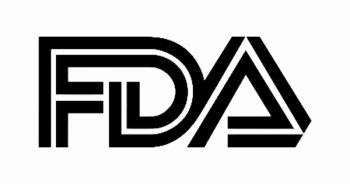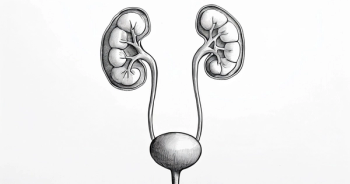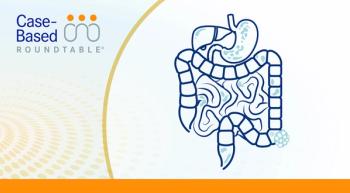
Targeted Therapies in Oncology
- June II 2025
- Volume 14
- Issue 8
- Pages: 39
TROP-2 Inhibitors Are Explored in Breast Cancer
Discover the latest advancements in breast cancer treatment at the 24th Annual International Congress, featuring expert insights and groundbreaking research.
Emerging data, clinical challenges, networking opportunities, and compelling presentations spotlight the upcoming 24th Annual International Congress on the Future of Breast Cancer® East, July 11 and 12, 2025, in New York, New York. Chaired by Joyce A. O’Shaughnessy, MD, the Celebrating Women Chair in Breast Cancer Research at Baylor University Medical Center in Dallas, Texas, the conference brings together breast cancer experts to address the current, complex, and emerging treatment landscape of breast cancer.
Specific topics that will be discussed at the conference include the clinical utility of monitoring minimal residual disease in early breast cancer, the current and future landscape of antibody-drug conjugates (ADCs), de-escalation of treatments in breast cancer, and the role of neoadjuvant therapy in breast cancer. For more details, see the AGENDA.
Targeted Therapies in Oncology discussed the conference and the current landscape of TROP-2 targeted therapies with O’Shaughnessy.
Currently, 2 TROP-2–directed antibodies are approved for breast cancer: sacituzumab govitecan-hziy (Trodelvy) and datopotamab deruxtecan-dlnk (Datroway).
Sacituzumab Govitecan
Sacituzumab govitecan gained FDA approval for use in patients with unresectable locally advanced or metastatic triple-negative breast cancer (TNBC) who have received 2 or more prior therapies and for patients with pretreated metastatic hormone receptor–positive, HER2-negative breast cancer.1,2
The TNBC approval was based on findings from the phase 3 ASCENT trial (NCT02574455) that compared sacituzumab govitecan with single-agent chemotherapy (eribulin, vinorelbine, capecitabine, or gemcitabine) based on physician’s choice in patients with relapsed or refractory metastatic TNBC. The primary end point was progression-free survival (PFS) among patients without brain metastases. Bardia et al reported that the median PFS was 5.6 months (95% CI, 4.3-6.3) with sacituzumab govitecan and 1.7 months (95% CI, 1.5-2.6) with chemotherapy (HR, 0.41; 95% CI, 0.32-0.52; P < .001). The median overall survival (OS) was 12.1 months (95% CI, 10.7-14.0) with sacituzumab govitecan and 6.7 months (95% CI, 5.8-7.7) with chemotherapy (HR, 0.48; 95% CI, 0.38-0.59; P < .001).
Approval for the agent in patients with hormone receptor–positive, HER2-negative disease was based on findings from the phase 3 TROPICS- 02 trial (NCT03901339). Median PFS was 5.5 months (95% CI, 4.2-7.0 months) with sacituzumab govitecan and 4 months (95% CI, 3.1-4.4) with single-agent chemotherapy (HR, 0.66; 95% CI, 0.5.3-0.83; P = .0003). Median OS was 14.4 months for those receiving sacituzumab govitecan (95% CI,13.0-15.7) and 11.2 months (95% CI,10.1-12.7) for those receiving single-agent chemotherapy (HR, 0.79; 95% CI, 0.65-0.96; P = .0200).4
“The field is rapidly evolving with sacituzumab undergoing evaluation with pembrolizumab [Keytruda] in patients with inoperable, locally advanced or metastatic TNBC,” O’Shaughnessy, who is also director of the Breast Cancer Research Program at Texas Oncology, US Oncology, said.
The combination demonstrated significant improvement in PFS compared with pembrolizumab and chemotherapy in the phase 3 ASCENT-04 trial (NCT05382286). Detailed results from the study will be presented at a future medical meeting, according to the manufacturer of sacituzumab govitecan. An early positive trend was seen for OS with the combination, and investigators will continue monitoring OS outcomes.5
Another study in patients with early-stage TNBC is also of interest. The phase 3 ASCENT-05/AFT-65 OptimICE-RD/GBG 119/NSABP B-63 trial (NCT05633654) is evaluating sacituzumab plus pembrolizumab vs pembrolizumab with or without capecitabine in patients with residual TNBC. A total of 1514 patients will be randomly assigned to receive either 10 mg/kg of sacituzumab and 200 mg of pembrolizumab or 200 mg of pembrolizumab with or without 1000 mg/m2 of capecitabine.6 The primary end point is invasive disease–free survival, and secondary end points include OS, recurrence-free survival, safety, and tolerability.6
Datopotamab Deruxtecan
Datopotamab deruxtecan is indicated for patients with unresectable or metastatic hormone receptor–positive, HER2-negative breast cancer.7 The approval was based on efficacy findings from the phase 3 TROPION-Breast01 study (NCT05104866).8
Median PFS was 6.9 months (95% CI, 5.7-7.4) in the datopotamab deruxtecan arm and 4.9 months (95% CI, 4.2-5.5) in the chemotherapy arm (HR, 0.63; 95% CI, 0.52-0.76; P < .0001). Median OS was 18.6 months (95% CI, 17.3-20.1) with datopotamab deruxtecan and 18.3 months (95% CI, 17.3-20.5) with chemotherapy (HR, 1.01; 95% CI, 0.83-1.22).7
The confirmed objective response rate was 36% (95% CI, 31%-42%) and 23% (95% CI, 19%-28%) and the median duration of response was 6.7 months (95% CI, 5.6-9.8) and 5.7 months (95% CI, 4.9-6.8) in the datopotamab deruxtecan arm and chemotherapy arm, respectively.7
“These results were not dissimilar to what was seen in the TROPICS-02 trial, but the difference was that the TROPICS-02 trial with sacituzumab had a survival advantage in addition to a PFS advantage. Whereas in the TROPION-Breast01 trial, there was a significant PFS advantage but not an OS advantage,” O’Shaughnessy explained.
An investigational ADC, sacituzumab tirumotecan, is undergoing evaluation in a phase 3 study (NCT05347134) in patients with advanced or metastatic TNBC.
This ADC consists of a TROP-2– targeting monoclonal antibody; sacituzumab; a cytotoxic payload from the topoisomerase I inhibitor class; and a novel, irreversible but hydrolyzable linker, which joins the monoclonal antibody and the cytotoxic payload by leveraging proprietary linker-conjugation technology.9
Trial investigators reported that the primary end point of PFS was met based on an interim analysis, with sacituzumab tirumotecan demonstrating a 69% reduction in risk of progression or death (HR, 0.31; 95% CI, 0.22-0.45; P < .00001). The median PFS was 5.7 months (95% CI, 4.3-7.2) in the experimental arm compared with 2.3 months (95% CI, 1.6-2.7) in the control arm. The PFS rate at 6 months was reported as 43.4% vs 11.1%, respectively.9
With 2 agents approved by the FDA and another undergoing evaluation, this is an exciting setting for oncologists and their patients.









































